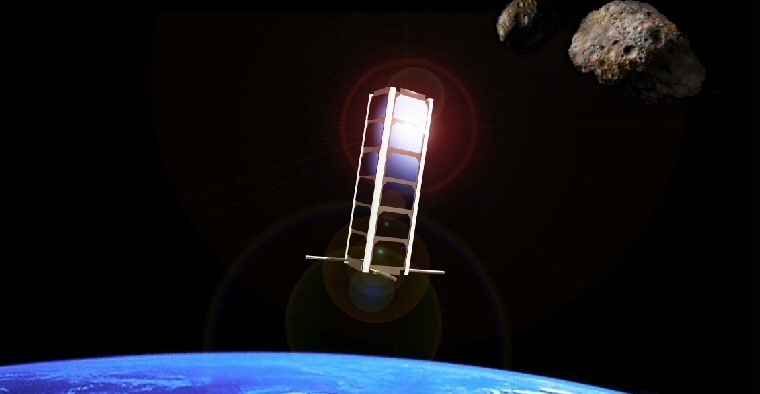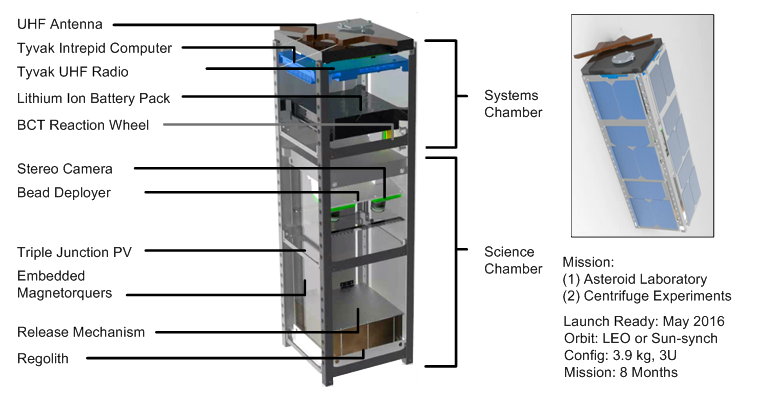Asteroid exploration can answer fundamental questions relating to solar system formation and trace the origins of organic molecules, the building blocks of life. Mobility in such extreme environments posed by these bodies is extremely challenging due to their low gravity, extreme temperature variations, differential compositions (ranging from solid iron and rock to rubble piles), and accumulation of surface electrostatic charge. ASU's Space and Terrestrial Robotic Exploration Laboratory (SpaceTREx) in collaboration with the Planetary Formation Laboratory (PFL) is actively developing the Asteroid Origins Satellite I (AOSAT 1), an on-orbit, 3U (34 x 10 x 10 cm), 4kg CubeSat, to simulate asteroid surface conditions. AOSAT 1 will achieve several firsts including being the first centrifuge spacecraft and being the first on-orbit science laboratory dedicated for planetary science research.Demonstration of this CubeSat will provide a low-cost pathway towards refining asteroid physical models, shed light on asteroid origins, and constrain the design of future landers, rovers, and resource extractors. AOSAT 1 will house crushed meteorites (remnants of asteroids) and enable scientific experiments within its payload chamber while operating in two distinct modes: 1) a centrifuge producing artificial gravity to simulate surface conditions on asteroids greater than 1 km diameter, and 2) as a stationary micro-gravity laboratory to investigate primary accretion. These experiments will further our knowledge of planet formation and surface properties of asteroids. Major design challenges related to spacecraft stability must be overcome due to the shifting regolith within the relatively large experimental chamber. The proposed system illustrates the effective use of low-cost, off-the-shelf components in the rapid assembly and instrumentation of a CubeSat science laboratory.

